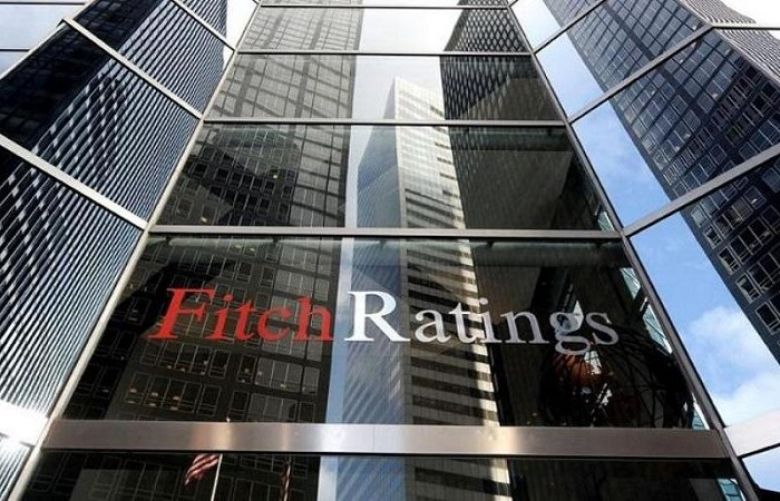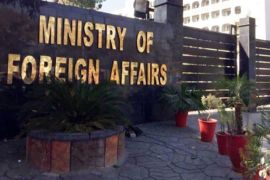Fitch Ratings has affirmed Pakistan’s Long-Term Foreign- and Local-Currency Issuer Default Ratings (IDRs) at ‘B’ with stable outlooks.
The issue ratings on Pakistan’s senior unsecured foreign- and local-currency bonds, country ceiling as well as the Short-Term Local- and Foreign-Currency IDRs are also affirmed at ‘B’.
The issue ratings on the third Pakistan International Sukuk Company Limited’s foreign-currency global certificates have also been affirmed at ‘B’. The company was incorporated primarily for the purpose of facilitating sukuk transactions and is wholly owned by Pakistan.
Pakistan’s ratings balance broad gains have been achieved over the International Monetary Fund (IMF) programme against a high public debt/GDP ratio, low scores on the World Bank governance indicators and heightened security risks.
Pakistan completed a three-year IMF Extended Fund Facility (EFF) in September 2016. The country has entered 12 IMF programmes since 1988.
Under the programme, reserves were strengthened, the fiscal deficit reduced and significant progress was made on structural reform. Pressure related to the 2018 elections could test the government’s commitment to maintaining the policy framework set out by the IMF.
The country’s economic outlook has brightened since the start of the programme, with annual GDP growth rising to 4.7% in the financial year ending June-2016 (FY16), from 3.7% in FY13, above the ‘B’ median of 3.6%.
Fitch expects growth to strengthen to 5.3% in FY17, lifted by a recovery in agricultural output following poor weather conditions in the previous season and an influx of investment linked to the China-Pakistan Economic Corridor (CPEC).
“We forecast continued strong domestic demand, with private consumption aided by faster credit growth. Remittances have moderated, as over half come from Gulf economies that are adjusting to lower energy prices, but a sharper slowdown is a downside risk. A sharp slowdown in remittances is a downside risk, as over half come from Gulf economies that are still adjusting to lower energy prices.”
Inflation slowed to 2.9% in FY16, a positive development for a country that has experienced higher and more volatile inflation than the ‘B’ median. Fitch expects inflation to increase to 4.5% in FY17 and 4.8% in FY18, as commodity prices slowly recover. Inflation is then forecast to remain stable in the medium term.
Central bank financing of the fiscal deficit is an upside risk to inflation; government borrowing is shifting back towards the State Bank of Pakistan after moving towards private banks under the IMF programme. The banking sector has performed well, with improvements shown across IMF’s Financial Soundness indicators.
Non-performing loans remained high at 11.1% of total loans at FYE16, though this is down from a peak of 14.8% at end-June 2013. Pakistan’s public debt/GDP ratio of 64.8% at end-FY16 was higher than the ‘B’ median of 56.7%, but Fitch expects the ratio to gradually fall in the medium-term if the country can sustain its progress with fiscal consolidation.
The general government budget deficit fell to 4.6% of GDP in FY16, from 5.3% in FY15, with revenues boosted by structural reforms, including the lowering of the number of tax concessions. Fitch projects the budget deficit to continue narrowing gradually if the economy performs in line with our baseline scenario and the government remains committed to the policy plans set out during the IMF programme.
The accumulation of losses in public sector enterprises (PSE), particularly electricity distribution companies, has in the past led to injections of funds from the federal government budget to clear debt. Efficiency improvements, higher tariffs and lower energy prices have helped cut PSE losses.
However, plans to sustain long-term efficiency gains through privatisation have been delayed due to objections from workers and political opposition. PSE losses could rise considerably if Pakistan suffers an economic shock or there is a sharp rise in energy prices, ultimately feeding through to the government balance sheet.
“We do not expect Pakistan to face external liquidity difficulties in our baseline scenario, but increasing gross external financing needs could increase the country’s vulnerability to shifts in investor sentiment.”
External debt service costs are likely to increase in the medium-term, with $2.75 billion of international bonds maturing between FY17 and FY20. The country will also start paying back the $6.4 billion IMF facility and $11.7 billion of rescheduled Paris Club debt in FY18 and FY17, respectively, albeit over an extended timeframe.
Fitch also expects the current account deficit to widen as energy prices start to recover and capital imports increase with higher infrastructure investment, although such investments will be heavily funded by Chinese entities as part of the CPEC.







